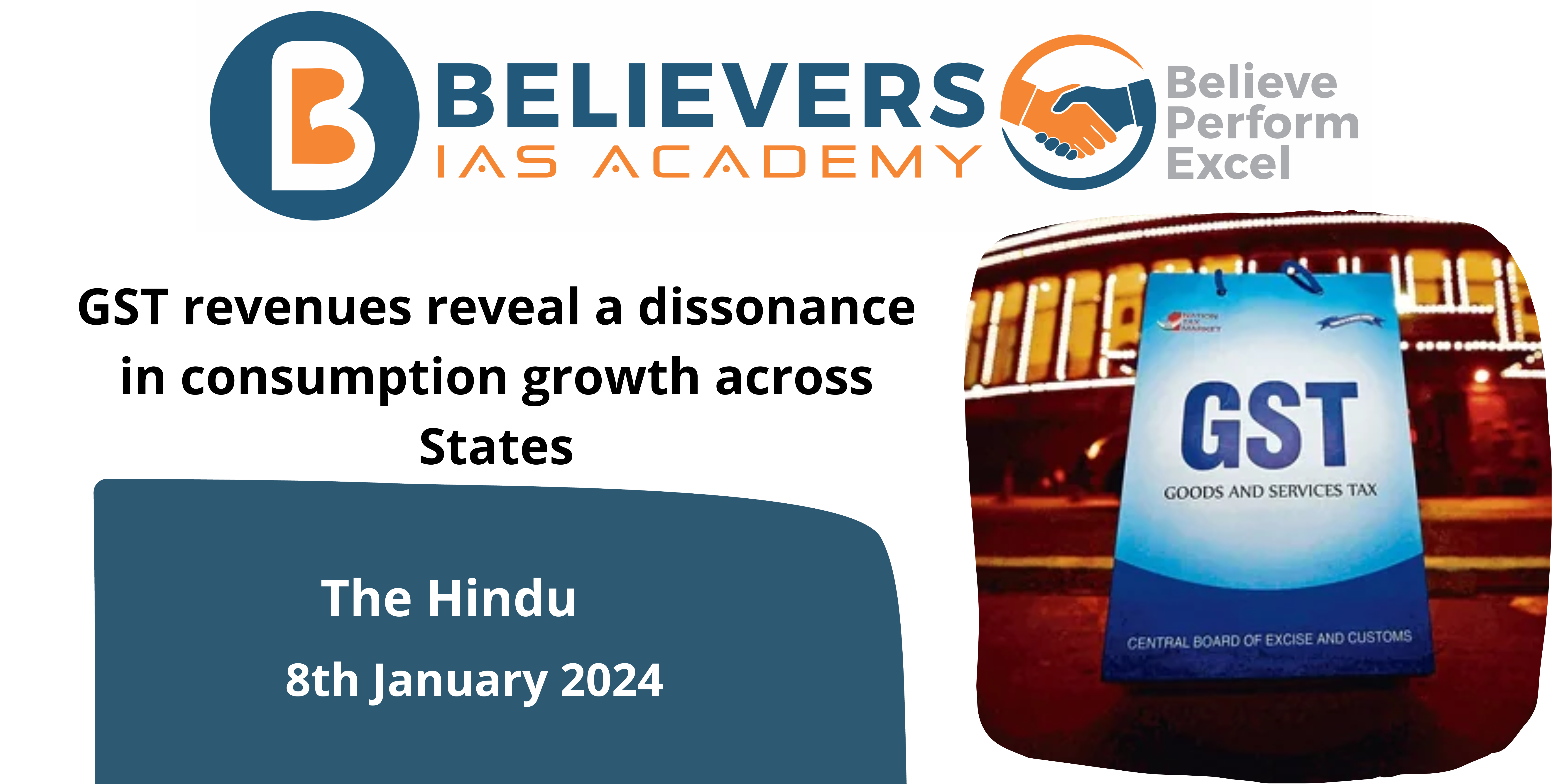GST revenues reveal a dissonance in consumption growth across States
Context:
Goods and Services Tax (GST) revenues for the initial nine months of the fiscal year 2023-24, uncovers disparities in consumption growth across various states. Gujarat, West Bengal, and Andhra Pradesh emerge as contributors to weaker growth, raising broader concerns about the overall trajectory of consumer spending.
Relevance:
GS-03 (Economy)
Highlights:
- Consumer Spending Concerns: Amid apprehensions regarding weak consumer spending trends, Goods and Services Tax (GST) revenues for the first nine months of 2023-24 reveal disparities in consumption growth across states.
- Dissonance in Consumption Growth: States like Gujarat, West Bengal, and Andhra Pradesh, among others, are experiencing weaker growth, contributing to concerns about overall consumption growth.
- Private Final Consumption Expenditure (PFCE): The National Statistical Office estimates a sluggish growth of just 4.4% in PFCE for the year, marking the slowest since 2002-03, excluding the pandemic-affected year of 2020-21.
- PFCE Growth Trends: After recovering to 6% in April to June 2023, PFCE growth slipped to 3.1% in the July-September quarter, underscoring the challenges in sustaining consumer spending momentum.
- State-wise GST Revenue Disparities: While overall GST revenues have grown robustly at 11.7%, State GST collections have seen sharper growth at 15.2%, highlighting potential regional disparities in consumption patterns.
- Regional Variations: Gujarat and West Bengal are among the larger states with less than double-digit growth, while others, including Madhya Pradesh, Maharashtra, Karnataka, Haryana, Uttar Pradesh, Tamil Nadu, and Telangana, exhibit growth rates above the national
average of 15.2%, emphasizing uneven consumption across geographies.
GST:
- The destination-based taxation system, known as the Goods and Services Tax (GST), was established through the 101st Constitutional Amendment Act.
- Functioning as an indirect tax on a national scale, GST embodies the principle of “One Nation One Tax,” aiming to create a unified market in India.
- This singular tax applies throughout the entire product cycle, from manufacturing to consumption, emphasizing value addition at each stage for goods and services. Unlike the previous system, the final consumer is only liable for their share of the tax, not the entire supply chain.
- The GST Council, chaired by the Finance Minister of India, is empowered to make decisions concerning any GST-related matters.
- At both the state and central levels, GST consolidates various taxes, including State Value Added Tax/Sales Tax, Entertainment Tax, Octroi, Entry Tax, Purchase Tax, Luxury Tax, and taxes on lottery, betting, and gambling at the state level.
- At the central level, it incorporates Central Excise Duty, Additional Excise Duty, Service Tax, Additional Customs Duty (Countervailing Duty), and Special Additional Duty of Customs.




